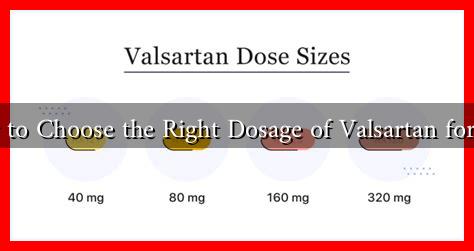-
Table of Contents
How to Choose the Right Dosage of Valsartan for You
Valsartan is a medication commonly prescribed for managing high blood pressure and heart failure. As with any medication, determining the right dosage is crucial for maximizing benefits while minimizing potential side effects. This article will guide you through the factors to consider when choosing the right dosage of Valsartan, supported by research and practical examples.
Understanding Valsartan
Valsartan belongs to a class of drugs known as angiotensin II receptor blockers (ARBs). It works by relaxing blood vessels, which helps lower blood pressure and improve blood flow. According to the American Heart Association, effective management of hypertension can significantly reduce the risk of heart disease and stroke.
Factors Influencing Dosage
Choosing the right dosage of Valsartan is not a one-size-fits-all approach. Several factors can influence the appropriate dosage for an individual:
- Age: Older adults may require lower doses due to changes in metabolism and kidney function.
- Weight: Body weight can affect how the body processes medication, necessitating dosage adjustments.
- Kidney Function: Impaired kidney function can lead to increased levels of Valsartan in the bloodstream, requiring a lower dose.
- Other Medications: Interactions with other medications can affect how Valsartan works, potentially requiring dosage adjustments.
- Underlying Health Conditions: Conditions such as diabetes or heart disease may influence the required dosage.
Starting Dosage Recommendations
The typical starting dosage of Valsartan for adults is 80 mg to 160 mg once daily. However, healthcare providers may adjust this based on individual needs. For example:
- A patient with mild hypertension may start at 80 mg.
- A patient with more severe hypertension or heart failure may begin at 160 mg.
In some cases, doctors may prescribe a higher initial dose, especially if the patient has previously been on other antihypertensive medications.
Monitoring and Adjusting Dosage
Once treatment begins, regular monitoring is essential. Patients should have their blood pressure checked frequently, especially during the first few weeks of treatment. Adjustments to the dosage may be necessary based on:
- Blood pressure readings: If blood pressure remains high, the doctor may increase the dosage.
- Side effects: If a patient experiences significant side effects, the doctor may lower the dosage or switch medications.
- Kidney function tests: Abnormal results may necessitate a dosage adjustment.
Case Studies and Statistics
Research indicates that approximately 30% of patients do not achieve target blood pressure levels with the initial dosage of Valsartan. A study published in the Journal of Hypertension found that patients who had their dosages adjusted within the first month of treatment were more likely to reach their target blood pressure compared to those who remained on the initial dose.
Another case study highlighted a 65-year-old male patient with a history of hypertension and diabetes. Initially prescribed 80 mg of Valsartan, his blood pressure remained elevated. After two weeks of monitoring, his dosage was increased to 160 mg, resulting in a significant reduction in blood pressure and improved overall health.
Consulting Your Healthcare Provider
Choosing the right dosage of Valsartan should always involve a discussion with your healthcare provider. They can provide personalized recommendations based on your medical history, current health status, and lifestyle factors. It’s essential to communicate openly about any side effects or concerns you may have during treatment.
Conclusion
Choosing the right dosage of Valsartan is a critical step in managing hypertension and heart failure effectively. By considering factors such as age, weight, kidney function, and other medications, patients can work with their healthcare providers to find the optimal dosage. Regular monitoring and open communication are key to ensuring that the treatment remains effective and safe. Remember, never adjust your dosage without consulting your healthcare provider, as they can provide the best guidance tailored to your individual needs.


